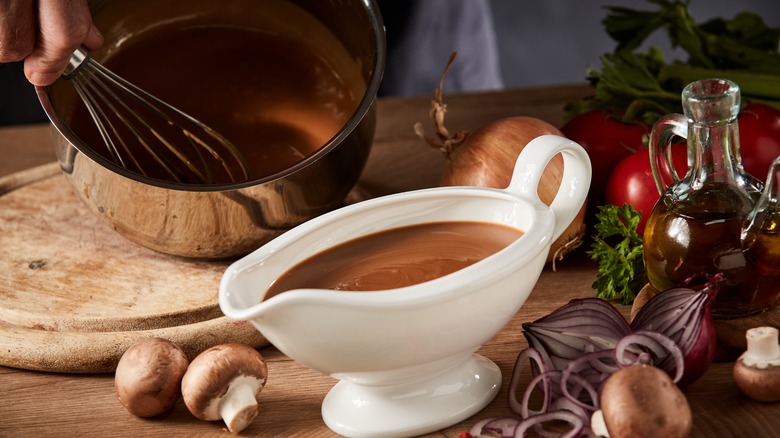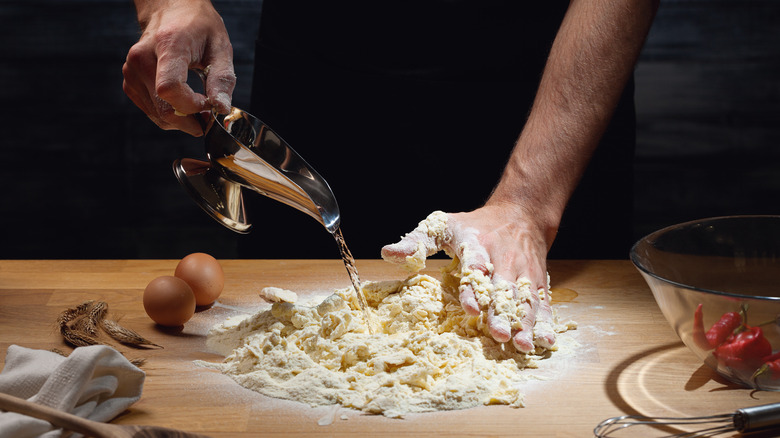Avoiding Lumpy Gravy Is All In The Prep Work
As the holiday season continues, parties, soirees, and celebrations go in full effect. From awkward office holiday parties to intimate dinners with the people we love most, one common denominator among all of the festive season's gatherings is food. Whether it's grandma's famous apple pie, dad's spicy tamales, or your roommate's first attempt at a casserole, food brings us together as we celebrate the holidays.
Whatever you choose to indulge in, gravy is a popular ingredient that pairs with many festive dishes. Let's be honest, there's nothing quite like lathering on a ladle full of gravy atop a southern Christmas dinner. But if you're not using it for a spread of buttery mashed potatoes, ham, and stuffing, gravy can elevate an endless array of other dishes made for the holidays and beyond. Not only is gravy a utilitarian sauce, but it also comes in many forms. White gravy, brown gravy, red-eye gravy, tomato gravy ... the list goes on. And while it's a simple ingredient, preparing it correctly isn't always guaranteed. In fact, it's quite common to whip up a batch of gravy only to find that it's a lumpy, coagulated mess. However, there are solutions designed to prevent and fix lumpy gravy.
Ways to prevent and remedy lumpy gravy
Gravy is made from meat drippings and a thickening agent like flour or cornmeal. Southern Living says that lumping tends to happen when the flour or cornmeal doesn't fully integrate with the grease, leaving clumps of flour floating in what should be a silky-smooth gravy. And once you have a curdled gravy, you're all but ruining the sauce entirely.
In order to avoid the lumps altogether, first make sure that your thickening agent is mixed with water before combining it with the pan drippings. Never add a dry thickening agent directly to the pan drippings. If you're using cornstarch, use one tablespoon of water for every cup of corn starch; if you're opting for flour, use two tablespoons of water for every cup of flour (per Real Simple). This technique smooths out the thickening agent from the beginning which helps prevent lumpy gravy. Once you've created a slurry from water and flour or cornstarch, Real Simple says to slowly introduce it to the pan drippings and whisk thoroughly to ensure that the ingredients combine seamlessly.
If you don't take preventative measures, use a sieve to strain out the residual flour or cornstarch. No sieve on hand? Giving it a whirl in the blender is another simple hack for getting rid of those unwanted clumps (per Real Simple).
Cheers to keeping your gravy boats lump free this holiday season!

